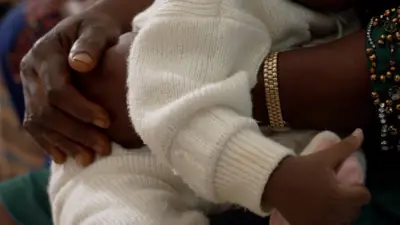We've updated our Privacy and Cookies Policy
We've made some important changes to our Privacy and Cookies Policy and we want you to know what this means for you and your data.
Baby tyrannosaurs dinosaurs were the 'size of a Border Collie'
Image source, Julius Csotonyi
Baby tyrannosaurs were only the size of a Border Collie dog when they took their first steps, a team of palaeontologists has discovered.
Researchers from Edinburgh University examined fossilised remains of a tiny jaw bone and claw found in Canada and the US.
They have been revealed, in 3D scans, to belong to a baby tyrannosaur - cousin of the T-Rex dinosaur.
They are the first-known fossils of tyrannosaur embryos.
It suggests the creatures which lived more than 70 million years ago were only about 3ft (91cm) long when they hatched, despite being able to grow to 40ft (12.2m) in length and weighing about eight tonnes.
Tyrannosaur eggs
The team has also estimated that tyrannosaur eggs - remains of which have never been found - were around 17ins (43cm) long.
Distinctive tyrannosaur features were found in analysis of the three-centimetre long jaw bone, including a "pronounced chin", which the team say suggests physical traits were also present before they hatched.
The researchers said tyrannosaur hatchlings would be about the size of a Border Collie dog, much larger than the imagined baby raptors depicted in films like Jurassic Park.
Dr Greg Funston, of the university's School of GeoSciences, said: "These bones are the first window into the early lives of tyrannosaurs and they teach us about the size and appearance of baby tyrannosaurs.
"We now know that they would have been the largest hatchlings to ever emerge from eggs and they would have looked remarkably like their parents - both good signs for finding more material in the future."
and was supported by the Royal Society, Natural Sciences and Engineering Research Council of Canada, and National Science Foundation.
Researchers from the universities of Alberta, Calgary, Montana State and Chapman were also involved.
Top Stories
More to explore
Most read
Content is not available








